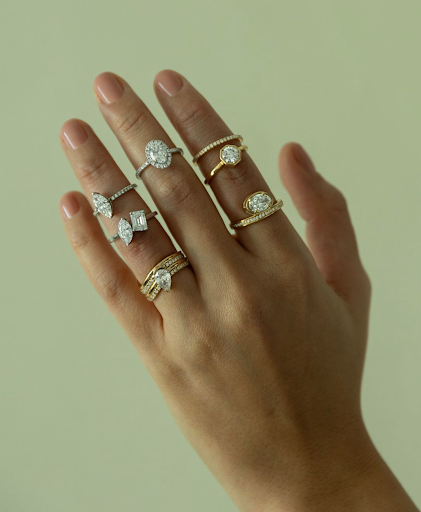
Understanding the 4 Cs of Diamonds: Cut, Clarity, Color, and Carat
Diamonds have captivated hearts for centuries with their brilliance and beauty. When choosing a diamond, especially for a special occasion like an engagement ring or a celebratory diamond bracelet, understanding the diamond’s quality becomes crucial. Here’s where the concept of the 4 Cs comes in.
The 4 Cs – Cut, Clarity, Color, and Carat – are the universally accepted standards used to evaluate a diamond’s quality and ultimately its value. By understanding each variable, you can make informed decisions when selecting a diamond that perfectly suits your taste and budget.
1. Cut
While many consider carat weight the most important factor, the cut is arguably the most crucial aspect that determines a diamond’s brilliance. The cut refers to the way a diamond is faceted, impacting its ability to interact with light and create that dazzling sparkle we all love. A well-cut diamond maximizes light refraction and reflection for exceptional brilliance, fire (the rainbow flashes of color), and scintillation (the play of light and dark facets).
Here’s a breakdown of diamond cut grades:
- Excellent: The pinnacle of diamond cutting, achieving optimal light performance with exceptional brilliance and fire.
- Very Good: Offers excellent light return, making it a great choice for those seeking a balance between quality and value.
- Good: May have slight deviations in proportions that might affect brilliance but still offers good sparkle.
- Fair/Poor: Less desirable cuts that significantly impact light performance and brilliance.
2. Clarity
Clarity refers to the presence or absence of internal flaws (inclusions) and external blemishes on the diamond’s surface.These imperfections can be microscopic crystals, clouds, or surface scratches. A diamond with higher clarity is considered rarer and therefore more valuable.
Here’s a simplified breakdown of diamond clarity grades, typically determined by a gemological laboratory:
- FL (Flawless): Extremely rare, with no visible inclusions under 10x magnification.
- IF (Internally Flawless): No inclusions visible under 10x magnification, but may have minor external blemishes.
- VVS1 & VVS2 (Very Very Slightly Included): Inclusions are extremely difficult to detect, even by a trained professional under 10x magnification.
- VS1 & VS2 (Very Slightly Included): Inclusions are minor and may require a trained eye to detect under 10x magnification.
- SI1 & SI2 (Slightly Included): Inclusions can be noticeable under 10x magnification but are often not visible to the naked eye.
- I1, I2, & I3 (Included): Inclusions may be visible to the naked eye, potentially affecting brilliance.
3. Color
The ideal color grade for white diamonds is completely colorless. Diamonds are graded on a scale starting with D (colorless) and progressing to Z (light yellow or brown). The closer a diamond is to D on the scale, the rarer and more valuable it becomes. However, it’s important to note that slight color variations are often not noticeable to the naked eye, especially for diamonds set in yellow or rose gold.
4. Carat
Carat refers to the weight of a diamond, with 1 carat equaling 0.2 grams. While carat weight is often associated with size, it’s important to remember that a diamond’s cut significantly impacts its visual size. A well-cut 1-carat diamond can appear larger than a poorly cut diamond of the same weight.
Finding the Perfect Balance
Now that you understand the 4 Cs, the key lies in prioritizing them based on your needs and budget. Here’s a quick guide:
- For maximum sparkle on a budget: Prioritize a good cut over carat weight.
- For a larger, visible diamond: Choose a slightly lower cut grade if clarity is high and color is near colorless.
- For a truly exceptional diamond: Aim for excellent cut, high clarity (VS or higher), and near colorless (H or higher).
Beyond the 4 Cs: Ethical Sourcing
Ethically sourced diamonds are becoming increasingly important to many consumers. Look for diamonds certified by reputable organizations like the Kimberley Process Certification Scheme (KPCS), which aims to prevent conflict diamonds from entering the global market. Additionally, consider supporting brands like FYNE Jewellery that prioritize sustainable practices and ethical sourcing of their diamonds.
Conclusion
Understanding the 4 Cs will help you choose a diamond that not only meets your aesthetic preferences but also aligns with your values and budget.


